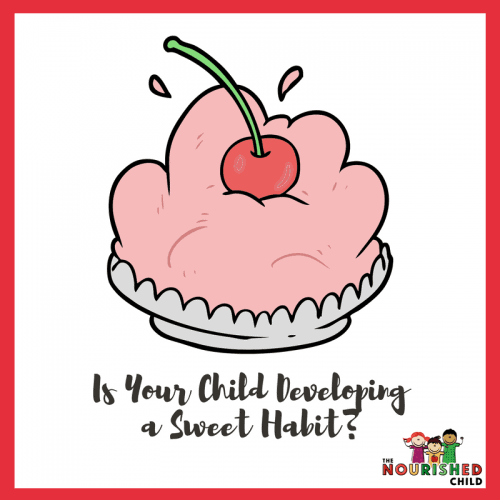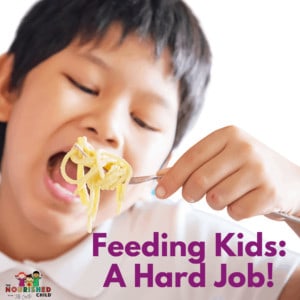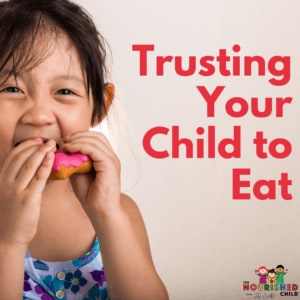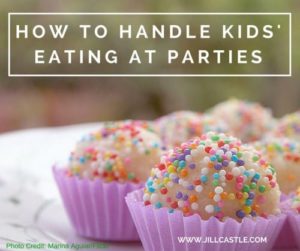7 Food Rules for Kids that Need to Go Away
August 12, 2015
Food rules for kids may not be useful or helpful. Check out some of the counter-productive food rules and why they interfere with children’s eating.
We all have mealtime rules for our children. These rules are supposed to keep the meal organized, pleasant, and healthy.
However, some food rules really aren’t that healthy at all. In fact, a myriad of unhealthy food rules for kids reign at many family meal tables.
And these food rules interfere with healthy eating, developing good eating habits, and a healthy relationship with food.
So they need to go away.
Eating Rules for Children that Families Should Drop
Here are the food rules for kids that do the most harm with an explanation of why.
1. Clean your plate
We’ve all heard about this eating rule, and many of us may have been raised with it.
I, myself, was part of the Clean Plate Club when I was a little girl. Clean your plate means eat everything.
The problem with this eating rule is that it ignores appetite.
What if your child eats half or ¾ of his meal and is satisfied? Should he or she continue to eat? Finish off the meal?
If you think, why yes!, of course my child should eat everything I have given him to eat, then re-think this.
Research shows that children who belong to the clean plate club, or who routinely finish their meal as a rule, may experience a disconnect with their internal appetite regulators (losing the ability to easily recognize their fullness) and may eat more than their body needs.
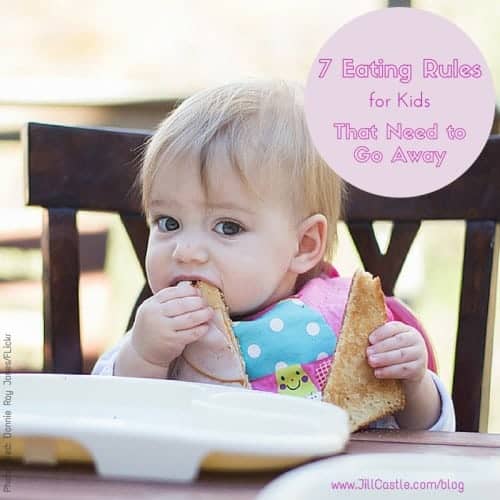
2. Eat this and you can have {that food}.
Rewarding a child for eating with a coveted food like dessert is a common motivational tool used by parents to get kids to eat something more desirable, such as vegetables or other healthy food.
Interestingly, when food rewards are used, studies show that an unexpected, psychological effect may take shape: kids can start to value the reward food (oftentimes a dessert) with higher regard than the healthy food you’re trying to get them to eat.
In other words, the reward food rules over the healthy food parents are trying to entice their kids to eat.
And, some children will eat more than they need just to get the reward food.
I explain this further in my TEDx talk:
3. Finish your veggies {or other food}
Similar to the clean plate club outcome discussed above, this food rule for kids mandates that children eat all of their vegetables (or any other food) increases the risk of disarming their natural appetite control with which they are born.
When this happens, kids can lose their sense of fullness, which is critical in helping them stop eating when they are satisfied, and maintain a healthy body weight.
In a nutshell, finishing any food beyond one’s appetite isn’t a good practice.
Additionally, mandating a child to eat any particular food can turn them off from learning to like and enjoy it.
4. Just take two bites
Parents are often worried about making sure their children get enough to eat. They may encourage their children to polish off another bite of food (or two or three).
While they may not enforce cleaning the plate or finishing a food item, they may still push their child to eat more or try a food they are unwilling to try.
This can translate to kids feeling pressured. As a parent, you only have to take a step back and see this tactic through a child’s eye.
It’s similar to the hard sell from the car dealership, or the pressure to take a stand or make a decision before you are ready.
That level of pressure makes you want to turn and run the other way, right?
Kids feel the same way when they are pressured to eat more or try something new when they are unsure.
Bottom line: Pressuring kids to eat often backfires, discouraging them from eating or trying new food.
5. ‘Can I be excused?’ conditions
Many children are finished eating and ready to leave the table before their parents. Children tend to eat more quickly than adults and want to move on to the next thing.
Based on experience, young children finish eating in 15-20 minutes (even less sometimes), while children and teens tend to be finished in 20-30 minutes.
Keeping the expectations realistic is important. Keeping a child at the table too long can turn into a negative experience.
Also, overly focusing on a child’s performance such as eating all of the meal, having good manners, or drinking milk may set up a dysfunctional relationship with food, turning an enjoyable part of the day into one associated with anxiety or dread.
6. Swallow it! {aka, Don’t spit out your food!}
Let’s get one thing straight: tasting food doesn’t equal eating food. Tasting can take the form of licking, kissing, putting food in the mouth and taking it out of the mouth, chewing food for a bit and spitting it out, or any combination of these.
For some children, especially hesitant eaters, one of the best ways to become comfortable and familiar with new food is to put it in the mouth, explore it, and take it out.
Forcing or pressuring a child to swallow his food can have negative consequences in the long run, such as a negative association with food and poor eating.
7. Don’t pick at your food
Handling food by touching it is a sensory experience. Many young children do well with eating when they can explore food with their hands first.
Young children, especially, are hands-on and need this experience to develop positive sensory associations with food and eating.
While you should strive to help your child learn to use utensils, you should also recognize that this takes time (years to be proficient!).
Keep your expectations realistic, let your child pick a little, and ease into using utensils.
Which food rules for kids do you see as interfering and would like to see go away?


